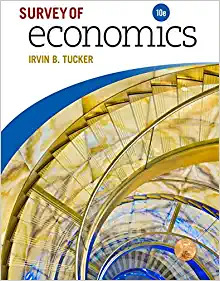Question
1. In the beginning of 2001, the unemployment rate was around 5%. Over the year, real GDP did not change. What would you suppose was
1. In the beginning of 2001, the unemployment rate was around 5%. Over the year, real GDP did not change. What would you suppose was the unemployment rate at the end of the year?
2. Let's say US GDP is currently around $18 trillion. Policymakers believe potential GDP was $19.5 trillion and that the multiplier for the US is around 1.5. How much would they have to increase government spending to get GDP to potential? What are possible leakages in the economy that might make this multiplier smaller? Try to explain it in a way that makes sense to someone who hasn't taken an economics class.
3. In our discussion on potential output, we discussed "optimal" levels for different macroeconomic indicators. An important question was raised - optimal for who? What are some conflicts among different groups in society that are relevant for macroeconomics? What are some examples of policy goals or targets where one outcome might be beneficial for one group of people might not be for another group? Answer in 1 to 2 paragraphs.
4. Use the following CPI data to answer questions 8 and 9:
| Year | CPI |
| 2012 | 230 |
| 2013 | 233 |
| 2014 | 236 |
| 2015 | 237 |
| 2016 | 240 |
| 2017 | 245 |
8. Tuition and required fees for full-time undergraduate students at John Jay were $5,759 in 2012 and $6,810 in 2016. By what percent has real tuition and required fees increased?
9. Suppose your yearly income in 2012 was $48,000 and in 2017 it was $53,000. By what percent has your yearly income increased?
Step by Step Solution
There are 3 Steps involved in it
Step: 1

Get Instant Access to Expert-Tailored Solutions
See step-by-step solutions with expert insights and AI powered tools for academic success
Step: 2

Step: 3

Ace Your Homework with AI
Get the answers you need in no time with our AI-driven, step-by-step assistance
Get Started


